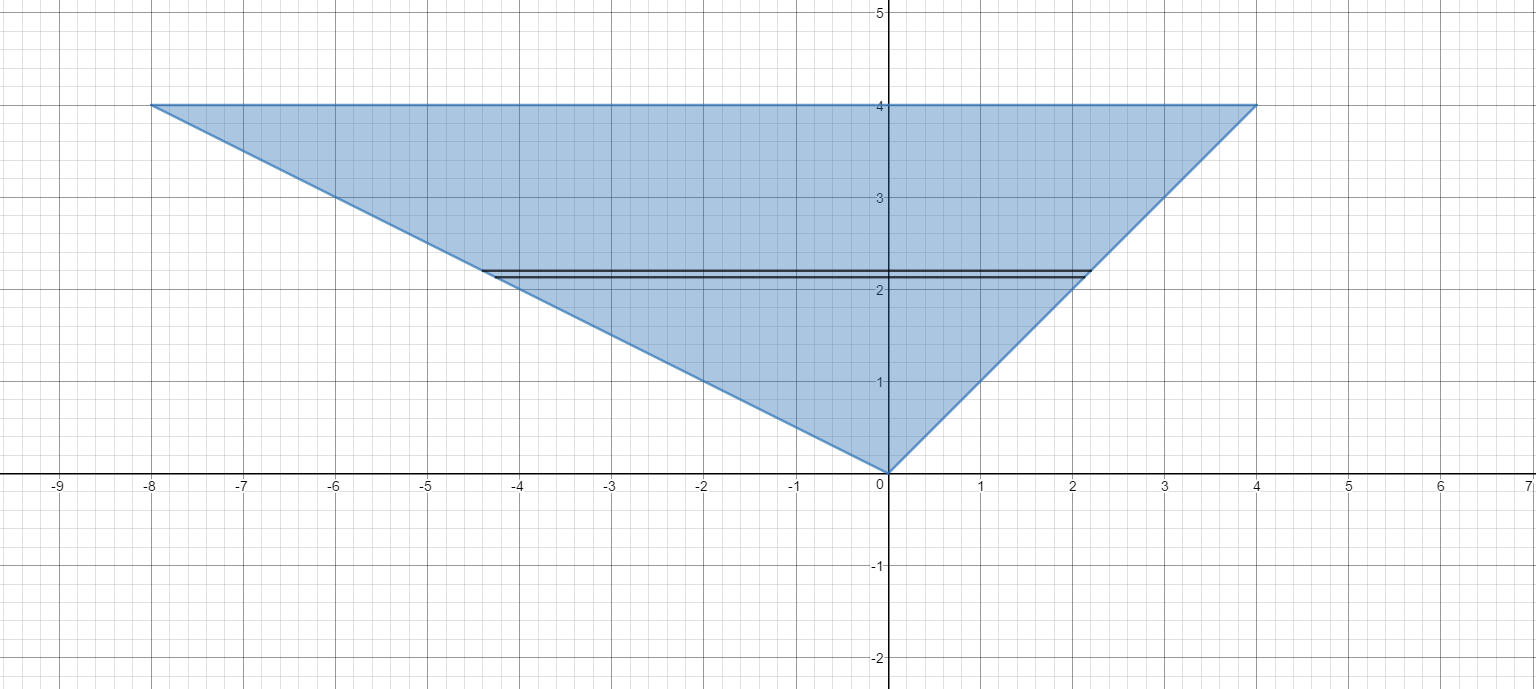The base of a certain solid is the triangle with vertices at (-8,4), (4,4), and the origin. Cross-sections perpendicular to the y-axis are squares. How do you find the volume of the solid?
1 Answer
Please see below.
Explanation:
Here is a picture (graph) of the base (in blue) with a thin slice taken perpendicular to the

The thinkness of this representative slice is
The line on the right contains
The line on the left contains
The side of the square built on the representative slice is
So,
The volume of the representative slice is
The values of

